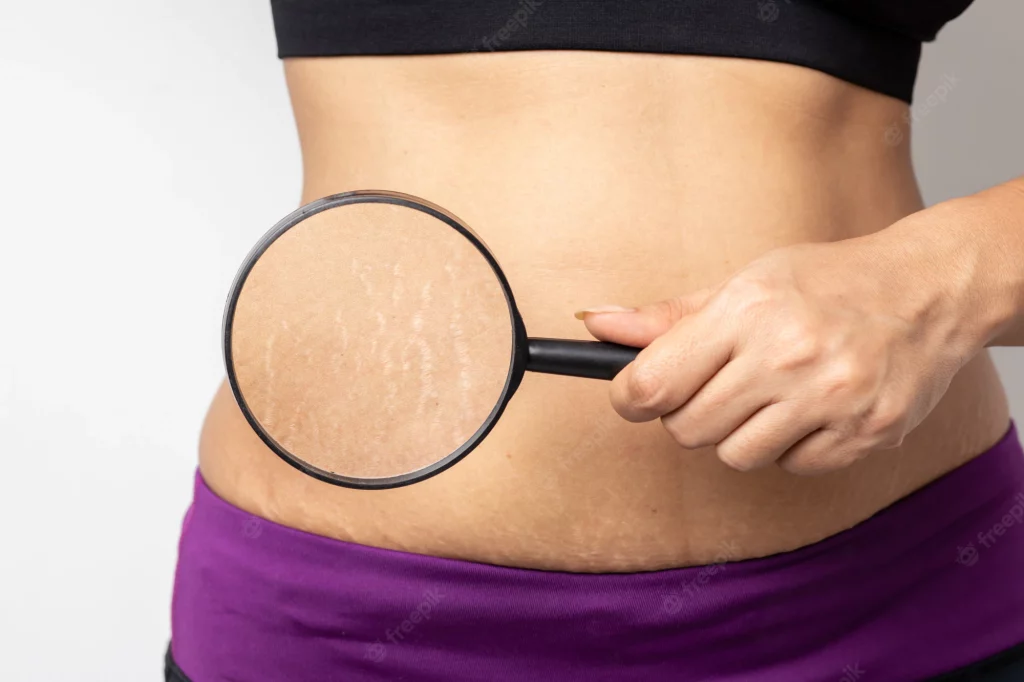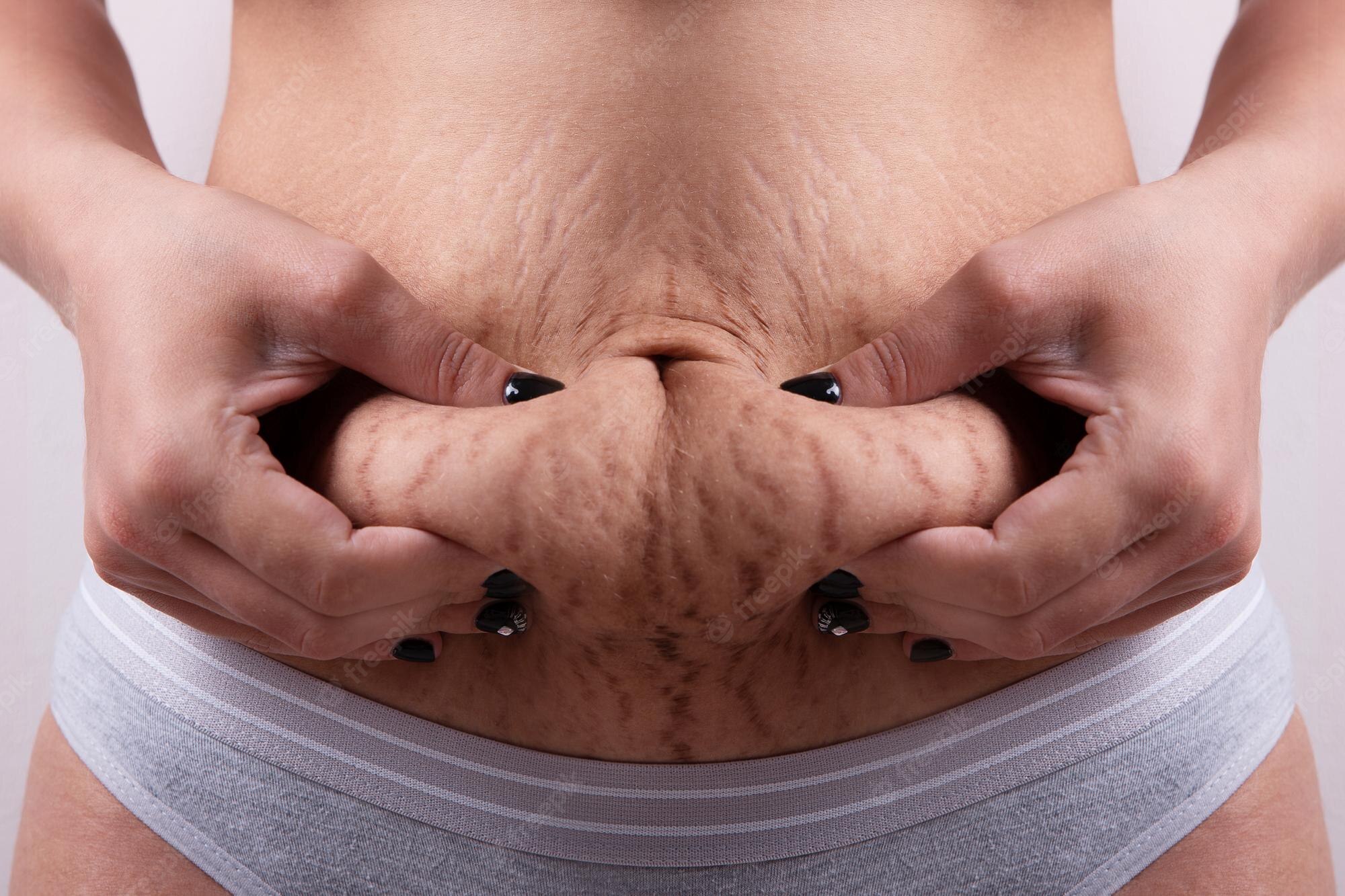
After giving birth, many women experience stretch marks. Stretch marks are caused when the skin stretches beyond its normal limits and can occur on any body part, including the breasts, hips, thighs, and abdomen. They typically fade within a few months but some women may experience more severe stretch marks that may take up to several years to disappear.
There is no one cure for stretch marks, but there are a few things you can do to help reduce their appearance. First, keep your skin hydrated by drinking plenty of fluids and applying moisturizers. If you are breastfeeding, make sure to latch your baby on properly to ensure adequate milk supply and high milk production will also help reduce the appearance of stretch marks. Finally, don’t worry if your stretch marks don’t disappear completely – they are a permanent part of your body and will gradually fade as you get older.
Contents
What are postpartum stretch marks?
Postpartum stretch marks are a common side effect of giving birth. They are typically red, pink, or brown and can occur on any part of the body.
Since they are related to the expansion and contraction of the skin during pregnancy and childbirth, postpartum stretch marks can often be reduced or eliminated with regular skin care.
Some women choose to have them treated with laser therapy or chemical peels, but these treatments can be expensive and may not always be available in every area.
If you are concerned about your postpartum stretch marks, talk to your doctor or healthcare provider about treatments that may be available to you.
How do you get postpartum stretch marks?
Stretch marks are common after giving birth, but there’s no one sure way to get them. Generally, they form when the skin stretches too much as it heals. They can appear anywhere on the body and may fade over time, but can also be permanent. There’s no sure way to avoid them, but some tips include being careful when exercising and following your doctor’s advice about bed rest.
How do you treat postpartum stretch marks?
If you have postpartum stretch marks, there are a few different things you can do to help them fade. You may want to check with your doctor first because some treatments may be dangerous if you are pregnant. You can also try using light therapy, topical cream, and laser treatment.
What are Stretch Marks?
Stretch marks are markings that can appear on the skin after delivery, during and after pregnancy, or as a result of weight loss or muscle gain.
Stretch marks can occur in any color, but most commonly they are a light brown, red, or tan. They are typically raised, slightly sunken bumps that may form a pattern on the skin.
Stretch marks are not always permanent and can fade over time. However, if they are not treated properly they may become more pronounced and persistent.
There is no one-size-fits-all approach to treating stretch marks; each person’s skin is unique and will respond differently to various treatments. However, some common treatments include: topical creams, topical ointments, laser therapy, cryotherapy (frozen treatment), and surgery.
Types of Stretch Marks
There are three main types of stretch marks: elastic, collagen and vaseline. Elastic stretch marks are the most common type and usually disappear within a few months. collagen stretch marks may take up to several years to fade but are less likely to go away completely. Vaseline stretch marks will never go away and are usually light brown or black in color.
How to Prevent Stretch Marks
Stretch marks are a common side effect of pregnancy and childbirth. They’re a result of the stretching and contracting of the skin. Unfortunately, there’s not much you can do to prevent them. However, you can minimize their appearance by following these tips:
Avoid elastic clothes: These clothes stretch easily and cause the skin to contract and form stretch marks.
Avoid exercising too hard: Pregnancy puts a lot of stress on your body, which can lead to stretch marks. Instead, take some time for yourself every day to relax and enjoy your exercise.
Avoid hot showers: Hot showers can cause the skin to become dry and weak, which is when stretch marks are more likely to form. Instead, baths or showers that are cool or tepid are better for your skin.
Moisturize regularly: Your skin needs hydration to stay healthy and elastic. Apply a light moisturizer every day after showering or bathing. Avoid oily or heavy moisturizers, which can make the skin more susceptible to stretch marks.
Treatment for Stretch Mark
There is no one-size-fits-all solution to treating stretch marks, as the severity and location of each mark will vary. However, a few common treatments include: physical therapy, laser therapy, topical creams and ointments, and electrical stimulation.
Physical Therapy: Physical therapy can help improve the elasticity of the skin and may help reduce the appearance of stretch marks. Sessions typically last 60 to 90 minutes and may be repeated multiple times over a period of several months or years.
Laser Therapy: Laser therapy is a relatively new treatment option for stretch marks that has shown promising results in some cases. It uses light energy to break down the scar tissue and reduce the appearance of stretch marks. Laser treatments typically last 30 to 45 minutes and are often done in several sessions over a period of several weeks or months.
Topical Creams and Ointments: Topical creams and ointments are another common treatment for stretch marks. They work by moisturizing the skin and helping to improve its appearance by reducing the appearance of scars. Some topical creams also contain ingredients that help reduce the size or number of stretch marks.
Electrical Stimulation: Electrical stimulation is a newer treatment
Conclusion
It can be hard to deal with postpartum stretch marks, but it’s important not to give up on yourself. There are a few things you can do to help minimize the appearance of these unsightly markings, and by following through with these tips you will start to see some improvement over time. Remember that every woman is different, so what works for one may not work for another. However, if you’re committed to trying out the best possible treatment options available and sticking with them until you see results, then eventually your stretch marks will fade away.

